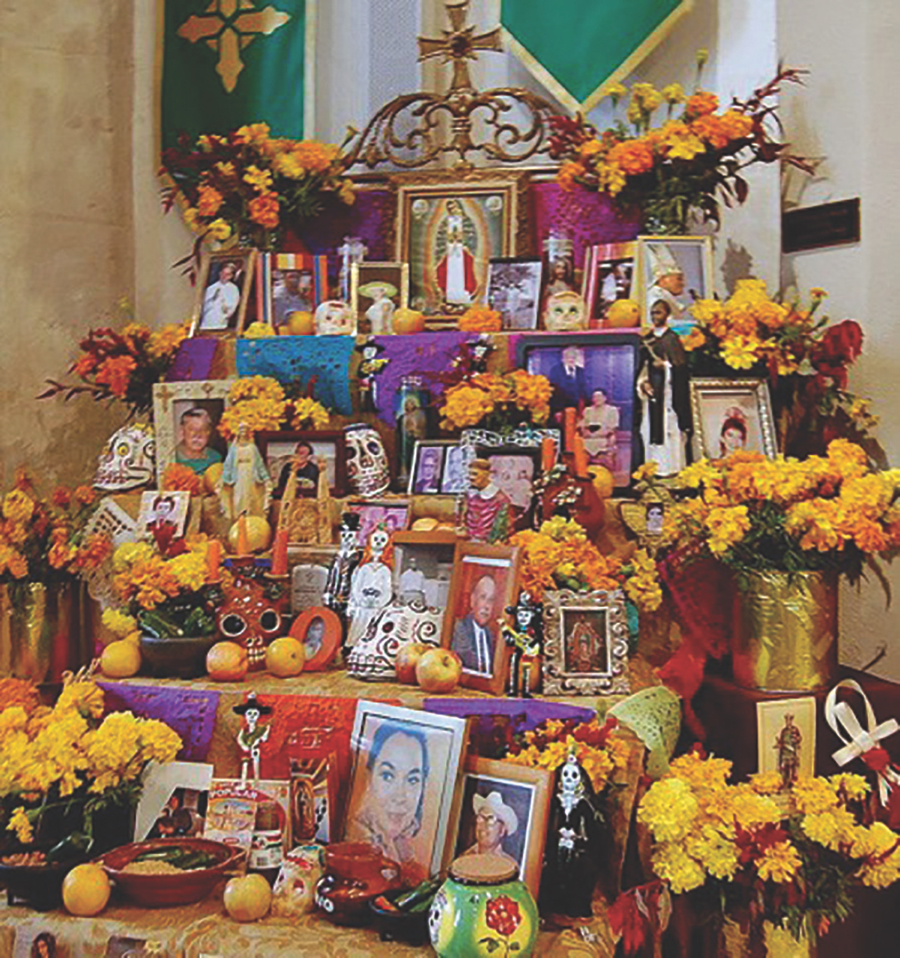
That which frightens us makes us feel more alive. Politics, sex, death, the unforeseen: all things outside our control serve this purpose.
It’s the end of October, the season for feeling more alive, even for the dead — a time for all the signs of death-within-life to grow reckless and vivid and in your face. We put on monster masks, because you can’t fear a monster while wearing its face.
All of nature participates in the illusion of dying. The light dims earlier each day as the chill wakes up. The sunsets over the breakwater take on the colors of the bonfire, orange, black, and purple. The lingering leaves seem to suck into themselves what’s left of the light while the wind, seeming way too drunk, sweeps leaves from their tethers like a flight of souls set free.
The harvest of Cape Cod commerce is in and stored away for winter. Orange lamplight glows from the windows of West End houses silhouetted black against a violet sky. A heron glides past, a cluster of bats, a monarch butterfly.
Local keepers of the Halloween flame put out pumpkins. Plastic skeletons hang from lampposts like criminals, and shreds of false cobwebs (why are they so scary to us?) bind up bushes.
The Outer Cape is gearing up for its last cackling fiesta. But Halloween was not born in Provincetown, or in Greenwich Village, and was not a child of the ’50s. Halloween has its roots buried so deep in the human condition that it’s more an archetype of our collective unconscious.
All cultures ritually acknowledge their ancestors, set aside time to contemplate the holiness of a season’s change, give thanks to still be alive, bow to what’s left of the warmth and light, and, with ceremony, honor and placate their dead.
To Americans the return of the dead is dreadful, while in other cultures, like Mexico’s, people see the return of the beloved dead on Día de los Muertos as a happy thing. The living do everything in their power to inspire the spirits on the path back home for a night of shared revelry.
Whole communities come out to spiff up the gravesites and build altars, called ofrendas, for the dead, festooned with orange, red, and purple flowers, lit candles, fragrant food, fruit, sweets, and booze. On it they lay photos, lyrics, toys, and keepsakes representing the loved person, everything to let the grandpa or nephew or wife know they are welcomed.
Meanwhile, as if on cue, an endless stream of migrating orange and black monarch butterflies from all over the world sail through the air — the universal symbol of resurrection returning to central Mexico.
So why in America and especially New England is death all decay and horror, our ultimate failure?
When the malevolent dead come back on our Halloween it’s an attempt to drag us into their realm and not the other way around. We dress up and pretend to be them, hungry ghosts demanding bribes, as we complain, like Dylan Thomas, about the dying of the light.
Inspired by Mexico’s lovely life-giving take on death, from Oct. 31 through Nov. 2 Wellfleet Preservation Hall will host a semi-traditional ofrenda installation in its front lobby. All members of the Cape Cod community are encouraged to bring photos, keepsakes, stories, candles, anything that represents their memory of a loved soul gone by and evokes the depths of their appreciation for those who have made their families and community richer with their well-lived lives.



